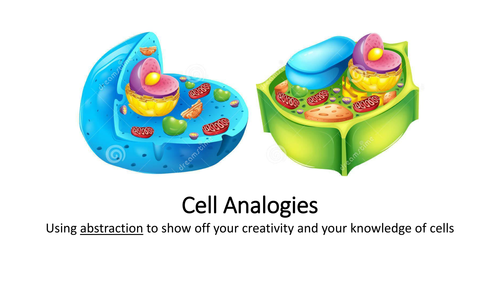




In the Cell Analogies project, students represent plant or animal cells by coming up with an overarching analogy that includes each cell component. They create a visual representation of their analogy on paper, in Google Slides or by coding it in Scratch, and then explain how each organelle fits in with their chosen analogy in a written justification.
For Google Docs and Slides links, please visit https://www.ctlessons.org/science/cell-analogies.html
Topics addressed:
Plant cells, animal cells and organelles
Primary CT concept: abstraction. After spending some time learning about the nitty-gritty details of cells and organelles, this is a great opportunity for students to take a step back and think about the cell at a higher level, representing key concepts and functions with creative analogies.
Students will be able to:
Describe how each organelle functions and how it benefits the cell
Create a visual representation their cell analogies in an artistic format
Materials:
PowerPoint presentation
Student handout
Craft materials, if you’d like students to have the option of creating a 3D model
Suggested lesson breakdown:
This project is more of a practice/synthesis tool than a teaching tool, and therefore works best towards the end of the unit.
10min – introduce project, go over requirements and grading rubric
10-15min – students brainstorm their overarching analogy and how each organelle fits in
55-70min – students create their visual representations of their analogies
15-25min – students write their explanations of each component of their analogy
Next Generation science standards:
NGSS.MS-LS1-2
Develop and use a model to describe the function of a cell as a whole and ways the parts of cells contribute to the function.
Common Core standards:
CCSS.ELA-Literacy.RST.6-8.7
Integrate quantitative or technical information expressed in words in a text with a version of that information expressed visually (e.g., in a flowchart, diagram, model, graph, or table).
Something went wrong, please try again later.
Great idea to get students to show understanding of cells
Going to use this!
Report this resourceto let us know if it violates our terms and conditions.
Our customer service team will review your report and will be in touch.